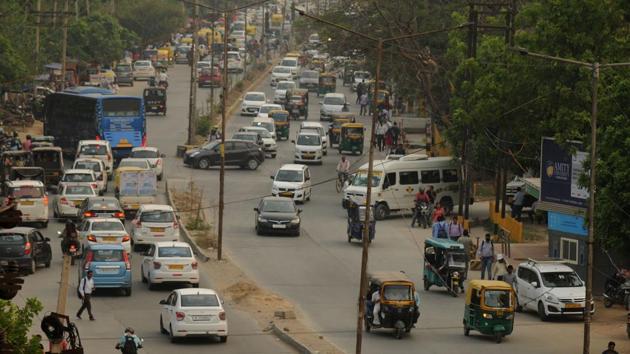To build Gurugram of tomorrow, the city must move out of cars
In Gurugram, the despair came on Monday morning as the traffic squad of a local developer with acres of property on either side of the junction removed the traffic circulation plan.
Sunday night, the world was shuffling between two epic sporting events. England and New Zealand were fighting the ICC World Cup finals at Lords while Federer and Djokovic were battling it out in the finals of Wimbledon championship. Back in Gurugram, a group of volunteers was raging another epic battle of demonstrating a design using cones, barricades and paints that would convert Shankar Chowk near the Cyber City from a ‘black spot’ to a safe crossing facility.

A black spot is a location, which witnesses more than three traffic deaths in two years. Shankar Chowk has witnessed 9 deaths in last 3 year with another half a dozen serious injuries.
Sunday night was also a night of despair. It was generally felt that New Zealand didn’t deserve to lose the cricket world cup or Roger Federer should have won the Wimbledon. But in Gurugram, the despair came on Monday morning as the traffic squad of a local developer with acres of property on either side of the junction removed the traffic circulation plan. The reason was that giving a safe pedestrian crossing facility was reducing traffic speed, thus causing congestion.
This clearly shows what’s wrong with Gurugram mobility planning. Let me elaborate with three questions that the city needs to answer.
Who uses the roads?
A study by the Gurugram Metropolitan Development Authority (GMDA) in 2018 points out that within the municipal corporation area, the largest mode of travel is walking (27%), followed by motorized two-wheelers (26%), car users (10%) and cyclists (4%). The remaining 33% comprises of people using both formal and informal modes of public transport systems, such as autos, taxis, buses, Metro and trains. Hence, pedestrians by far are the largest road users in the city, but the most ignored in terms of infrastructure provision. The situation is no different at Shankar Chowk which sees over 60,000 pedestrians crossing the intersection every day risking their lives as there are no safe crossing facilities for them. Therefore, the questions we ask is: do pedestrians not deserve any respect on the road?
Who contributes to congestion?
A 2010 advertainment campaign by a Dutch company said, “You are not stuck in traffic. You are traffic”. I think the all the agencies in Gurugram, and more so the private developers, should keep a big print out of these lines in their offices because instead of correctly blaming the number of motor vehicles, the blame is always shifted on pedestrians, cyclists, buses, etc. Motor vehicles cause congestion. Period. This was also the case with Shankar Chowk which sees 100 vehicles per minute cross but fails to notice a similar number of pedestrians crossing the location. Yes, 100 pedestrians cross the intersection every minute during peak hours. The total area of the intersection is about 10,000 sqm and this doesn’t include the area of the flyover and the underpass. The trail design gave less than 10% of the intersection area to pedestrians and furore happened. Tomorrow, if these 6,000 pedestrians decide to come on to the Shankar Chowk using cars in the peak hour, believe me, nothing will move in that area. Therefore, instead of blaming pedestrians for traffic jams why aren’t agencies doing something to restrict motor vehicles?
Who decides the action?
Speed is the biggest reason why India, unfortunately, ranks number one in the world on bad road safety. However, people still don’t understand the impact of speed on safety. Let’s simplify this for better understanding. If a car hits a pedestrian at 30kmph the chances of survival are 90%. However, if the speed of the same vehicle is 50kmph, the chances of survival reduce to 15%. Further, it is also seen that in the majority of Indian cities over 40% of road traffic deaths occur at intersections.
The situation is no different at Shankar Chowk. The private developers will only look at what is there in it for him. They are not bothered about the larger impact. Removing safe pedestrian crossing facilities may incur a few minutes of delay for his tenants, but is that a reason enough to discard the larger interest of the society? Who will decide the safety and mobility of users who are not catered to by the private developer, and that too when the road belongs to the public?
The question that city agencies need to ask is how many people are they willing to kill for saving a few minutes of time of people in cars? If the answer is a number, then God help the city. However, if the answer is zero then safety should come first, even if it means a few minutes of delay, so be it.
Jane Jacobs, the famous urbanist and activist, once said, “Not TV or illegal drugs, but the automobile has been the chief destroyer of American communities.” We are seeing something similar back home in India. It’s time to save our cities and not a better city to start with than Gurugram.
@amitbhatt4u
Amit Bhatt is the director of integrated transport, WRI India






